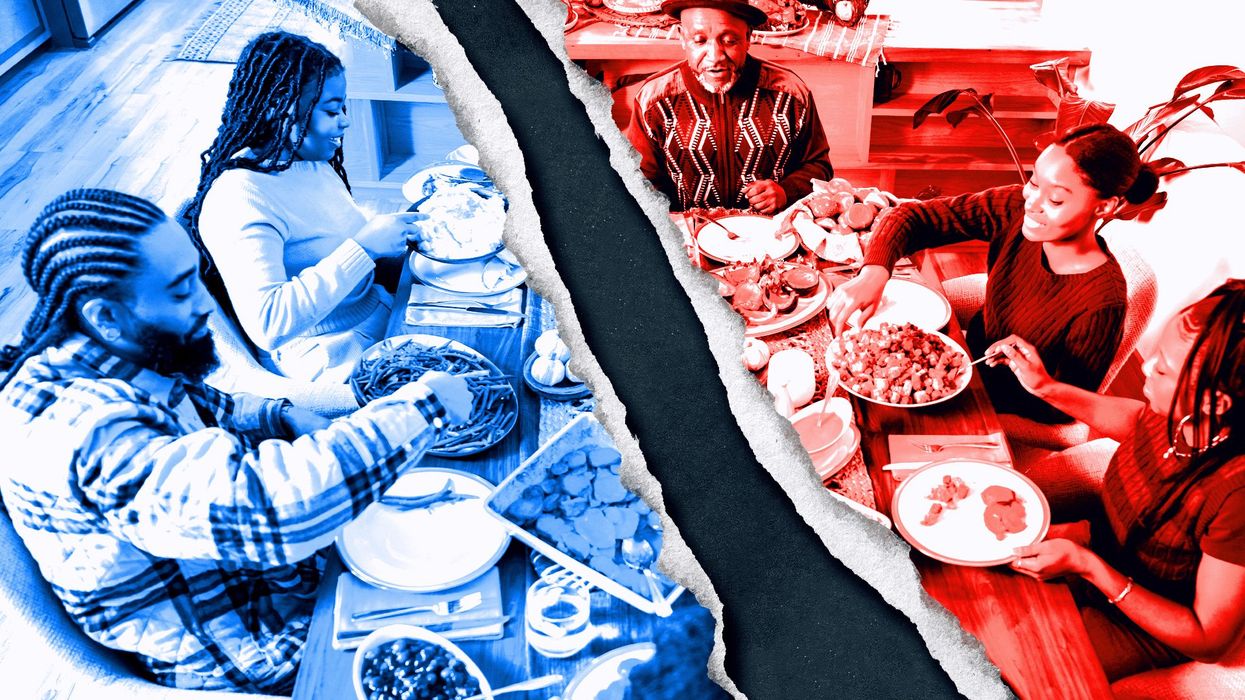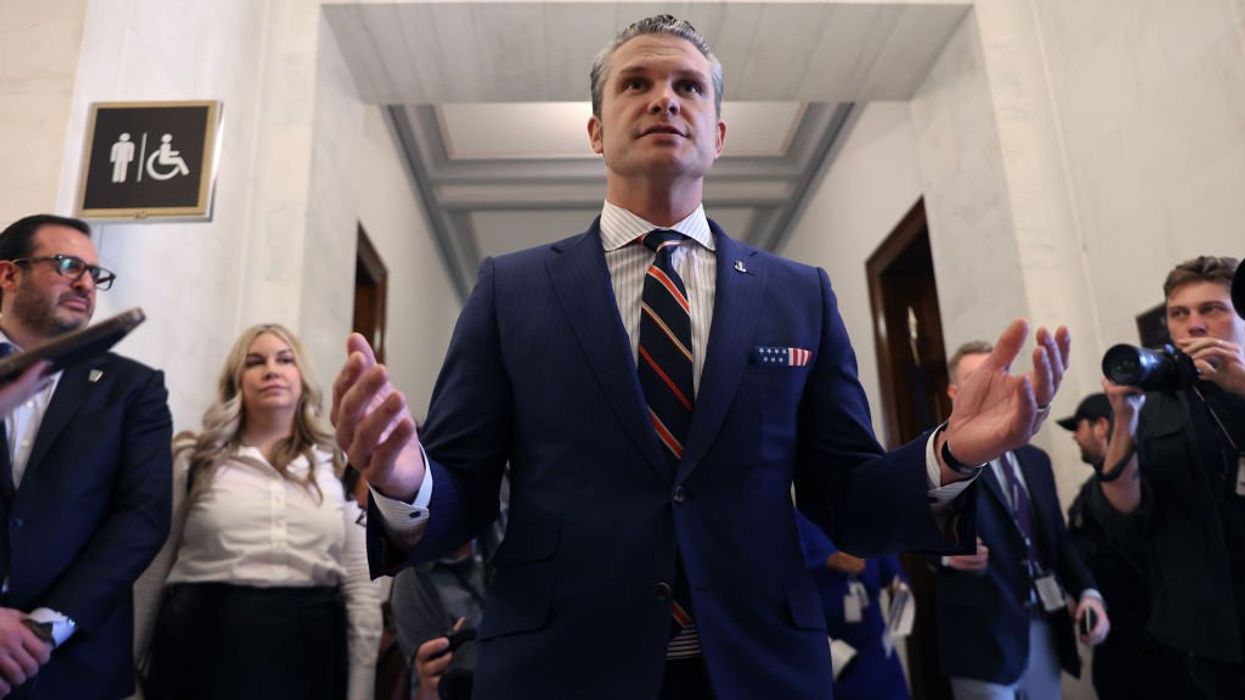
© 2024 Blaze Media LLC. All rights reserved.
Ed Schultz Makes Bold Claim That U.S. Has 'Never Had a Civilian Stop a Shooting' -- So We Prove Him Wrong
January 11, 2013
"...haven't we had enough school shootings where this is necessary? We've never had a civilian stop a shooting."
MSNBC personality and radio host Ed Schultz on Thursday made the bold claim that the U.S. has "never had a civilian stop a shooting" while arguing against having armed personnel in schools.
During his radio show, Schultz said a gunman might even view it as a "challenge" if there were armed employees at school. Here's what he said:
"Would it be a deterrent if, you know, say perpetrators know that there's guns in the schools? How do we know they wouldn't view that as a challenge? I mean, we got a goofy world out there. I'm just not convinced that packing a small firearm is the best defense or certainly not the best defense.You know, you want to make the best defense? Make the school a damn fortress. I mean, you could do that, I mean but, is that reasonable? Is that the right thing to do? Is it necessary? […] haven't we had enough school shootings where this is necessary? We've never had a civilian stop a shooting."
Watch the clip via MRCTV:
His claim is easily debunked. In fact, TheBlaze has reported extensively on situations where law-abiding gun owners have exercised their Second Amendment right to neutralize a threat.
In December, 2012, Jesus Manuel Garcia opened fire at a movie theater in San Antonio, shooting and wounding an innocent 49-year-old man. An off-duty sergeant then fired four shots with her firearm, wounding the gunman and preventing any further injuries. In this case, the female who stopped the shooting was trained by law enforcement.
On Dec. 11, 2012, a man shot and killed two people in a mall in Clackamas, Ore. before taking his own life. Nick Meli, a concealed carry holder, told KGW NewsChannel 8 that the last shot he fired after seeing his concealed handgun was "used on himself."
"I'm not beating myself up 'cause I didn't shoot him," Meli said. "I know after he saw me, I think the last shot he fired was the one he used on himself."
Mother Jones also released a report last month claiming that out of 62 mass shootings over the past 30 years, "not a single case was the killing stopped by a civilian using a gun."
The Weekly Standard's Mark Hemingway debunked this biased line of thinking. He writes: "There are a couple of major problems here with arguing that armed civilians don't stop mass shootings. One is that when armed civilians are present, they often stop mass shootings before they can become mass shootings. One of the criteria Mother Jones used to define mass shootings is that 'the shooter took the lives of at least four people.'"
The Weekly Standard provides a list of just some of the examples where armed civilians, some off-duty cops, were able to neutralize a lawless shooter:
– Winnemucca, Nev., 2008: Ernesto Villagomez opens fire in a crowded restaurant; concealed carry permit-holder shoots him dead. Total dead: Two. (I’m excluding the shooters’ deaths in these examples.)– Appalachian School of Law, 2002: Crazed immigrant shoots the dean and a professor, then begins shooting students; as he goes for more ammunition, two armed students point their guns at him, allowing a third to tackle him. Total dead: Three.
– Santee, Calif., 2001: Student begins shooting his classmates — as well as the “trained campus supervisor”; an off-duty cop who happened to be bringing his daughter to school that day points his gun at the shooter, holding him until more police arrive. Total dead: Two.
– Pearl High School, Mississippi, 1997: After shooting several people at his high school, student heads for the junior high school; assistant principal Joel Myrick retrieves a .45 pistol from his car and points it at the gunman’s head, ending the murder spree. Total dead: Two.
– Edinboro, Pa., 1998: A student shoots up a junior high school dance being held at a restaurant; restaurant owner pulls out his shotgun and stops the gunman. Total dead: One.
In another example, 24-year-old Matthew Murray opened fire at a church in Colorado Springs in 2007. Volunteer security guard and church member Jeanne Assam returned fire and shot him several times. Wounded badly, Murray then took his own life. Two people were killed in the shooting.
Had the volunteer not acted, many more people could have been killed, Senior pastor Brady Boyd told KKTV at the time. Assam also had previous law enforcement experience but was not a police officer at the time of the shooting.
"These are just a few examples of mass shootings being prevented. I'm sure there are many more that meet this criteria. But, as you can see, in every incident, the would-be shooters were stopped short of killing four people because an armed civilian -- or in some cases, an off-duty cop -- was present," Hemingway adds.
Newsbusters' Jack Coleman quotes from John R. Lott Jr.'s "More Guns, Less Crime" book, in which Lott uses an example from across the globe to make the same point.
"Three terrorists who attempted to machine-gun the throng (at a crowded venue in Jerusalem) managed to kill only one victim before being shot by handgun-carrying Israelis. Presented to the press the next day, the surviving terrorist complained that his group had not realized that Israeli civilians were armed. The terrorists had planned to machine-gun a succession of crowd spots, thinking that they would be able to escape before the police or army could arrive to deal with them."
"It would be more accurate of Schultz to say we haven't had a 'civilian' stop a shooting -- in a 'gun-free zone.' That's because law-abiding citizens, seeing a sign outside a movie theater or shopping mall or elementary school informing them that the site is a 'gun-free zone,' won't enter the property if they are armed. Criminals, especially those intent on murder, do the opposite," Coleman writes.
Can armed civilians prevent mass shootings? Weigh in.
This story has been updated.
Want to leave a tip?
We answer to you. Help keep our content free of advertisers and big tech censorship by leaving a tip today.
Want to join the conversation?
Already a subscriber?
more stories
Sign up for the Blaze newsletter
By signing up, you agree to our Privacy Policy and Terms of Use, and agree to receive content that may sometimes include advertisements. You may opt out at any time.
© 2024 Blaze Media LLC. All rights reserved.
Get the stories that matter most delivered directly to your inbox.
By signing up, you agree to our Privacy Policy and Terms of Use, and agree to receive content that may sometimes include advertisements. You may opt out at any time.



